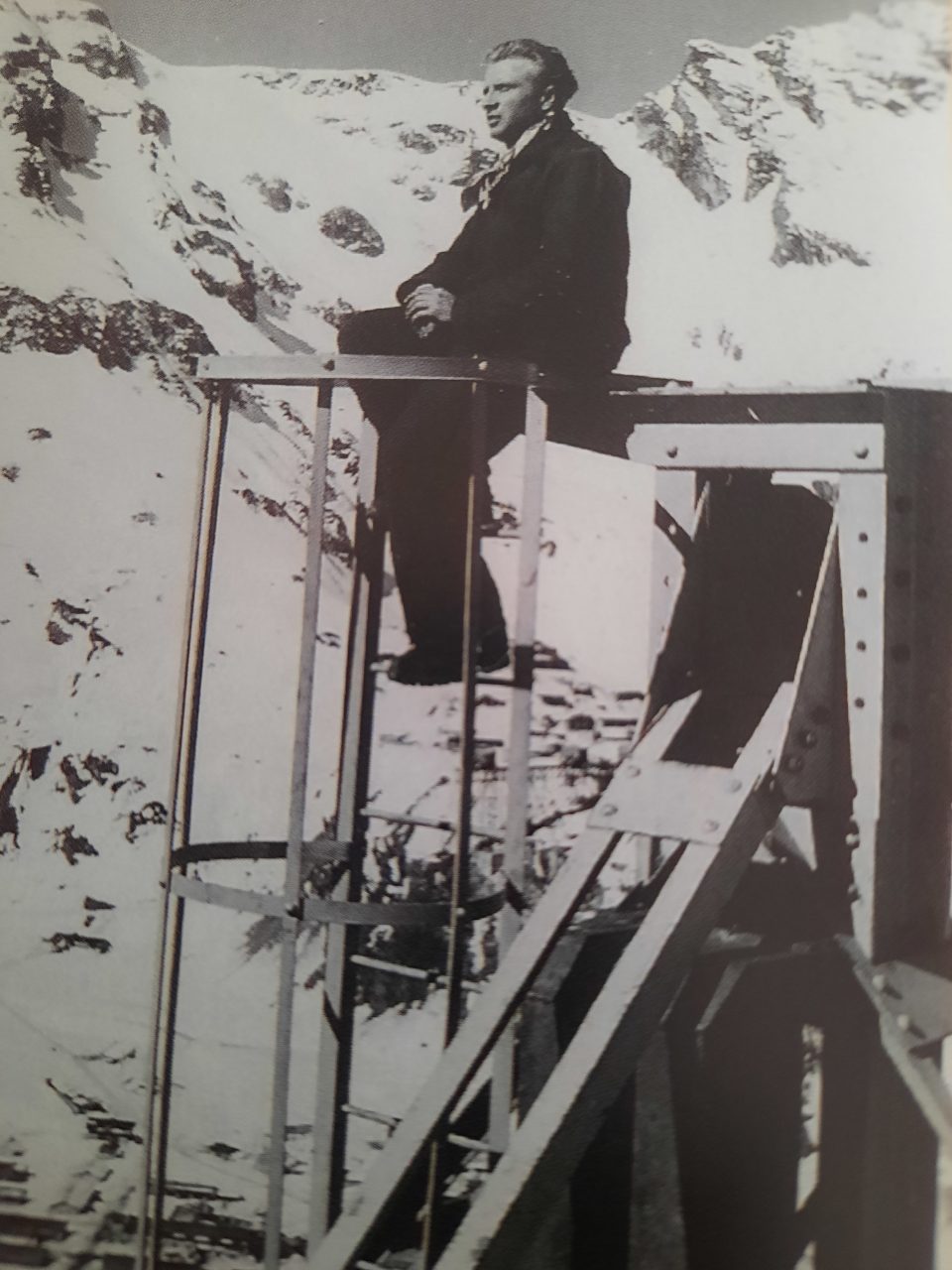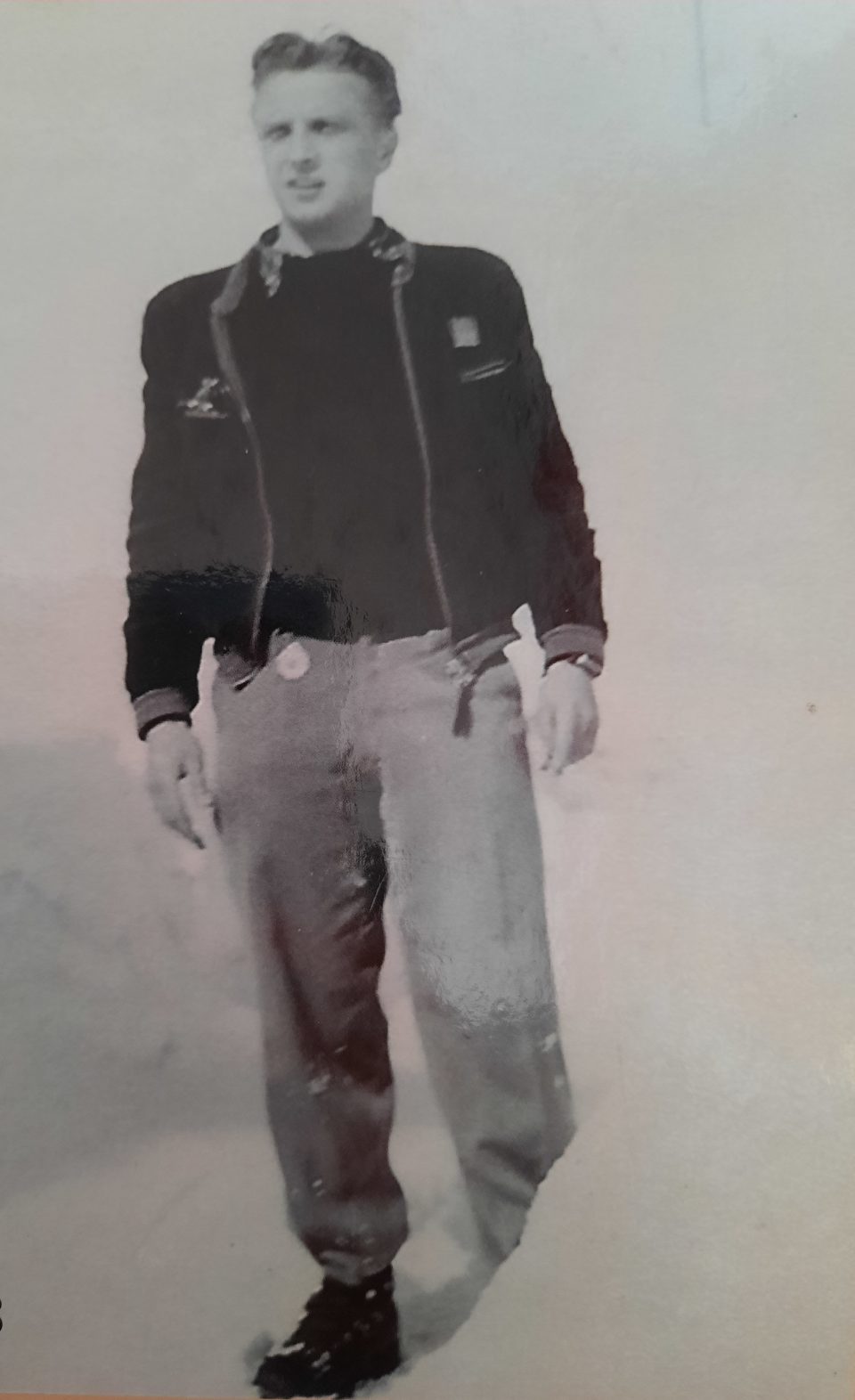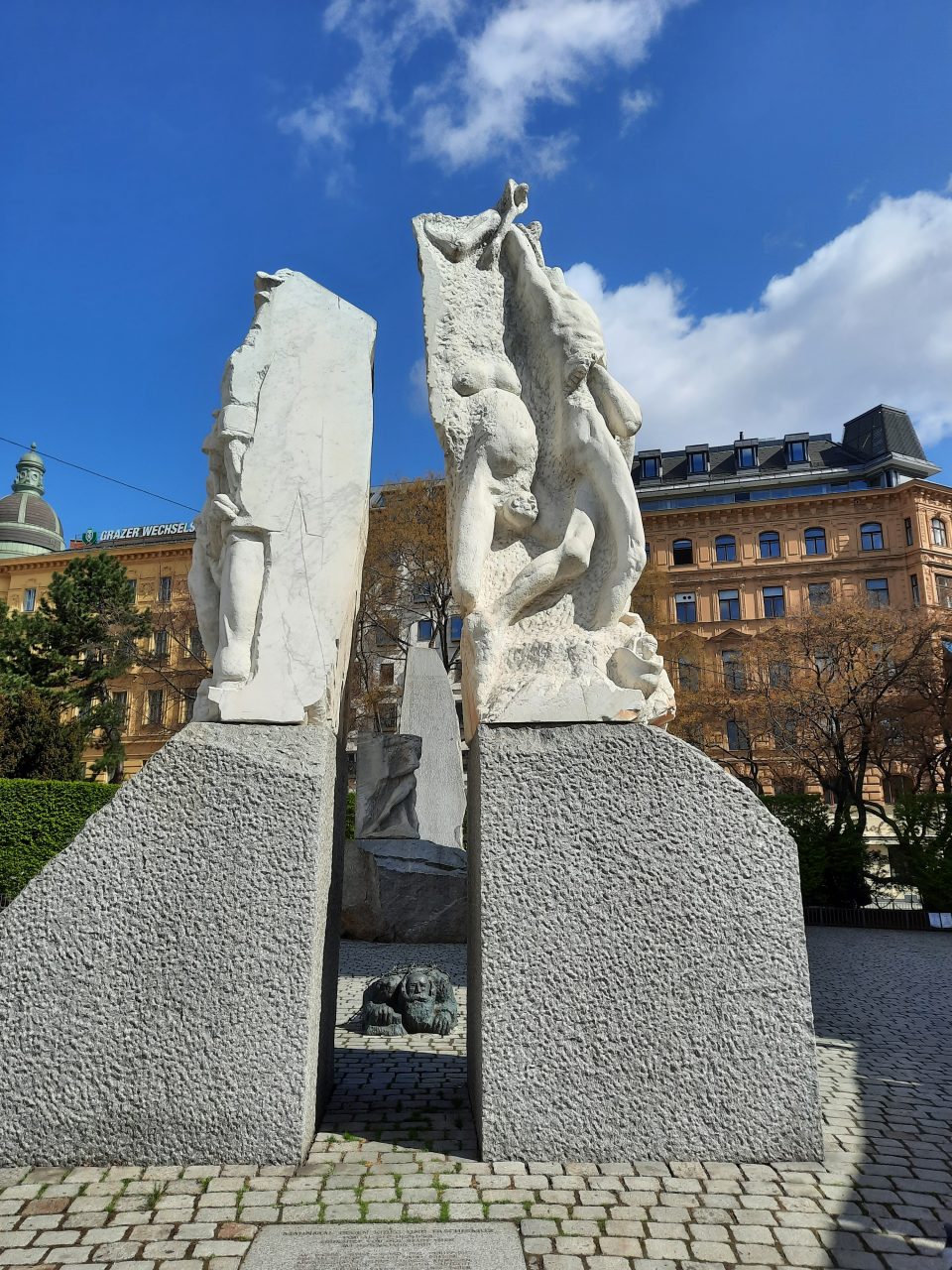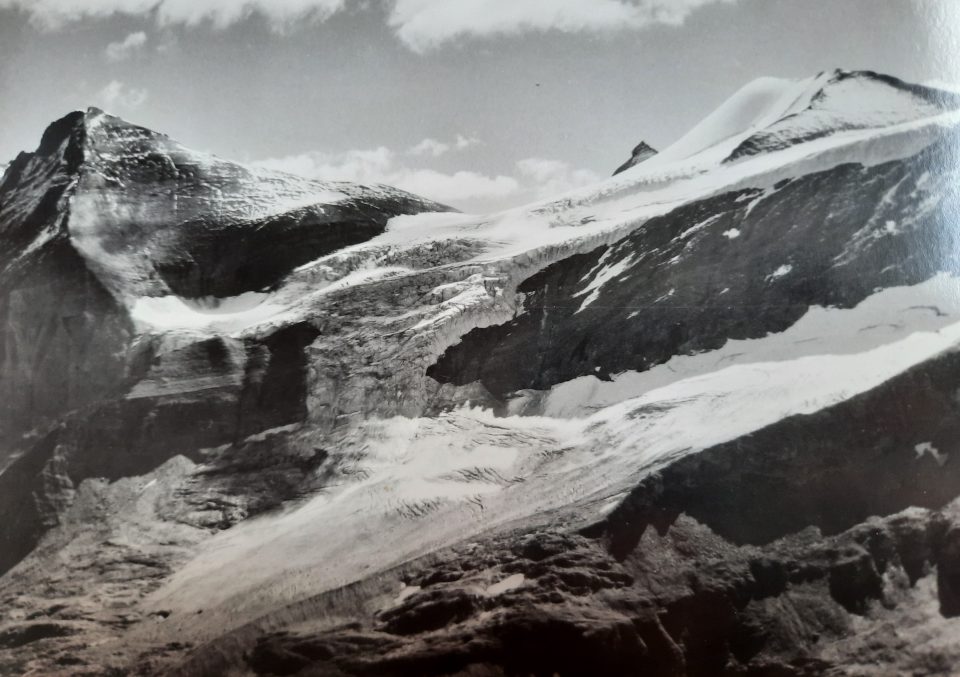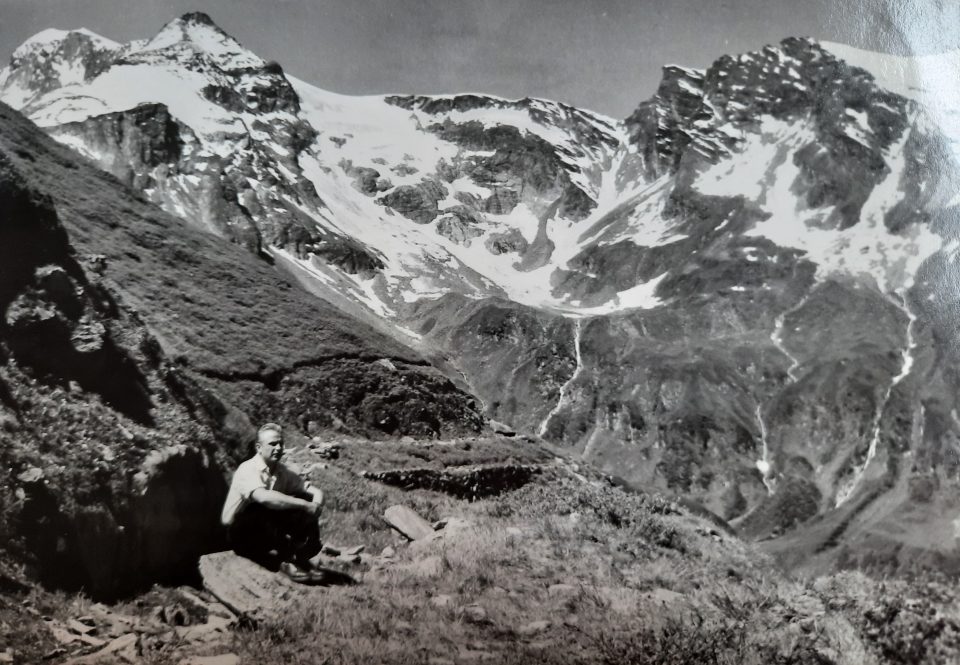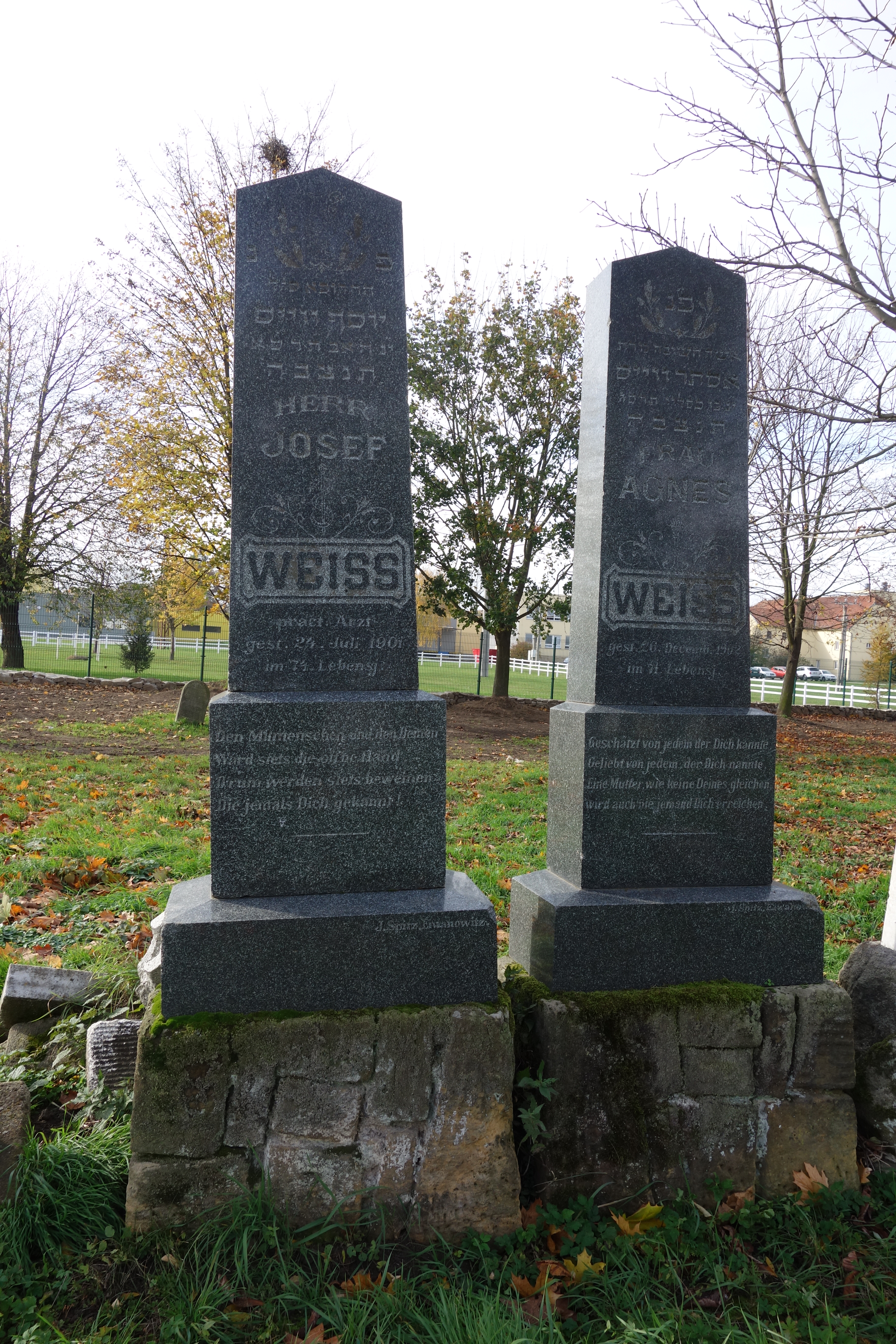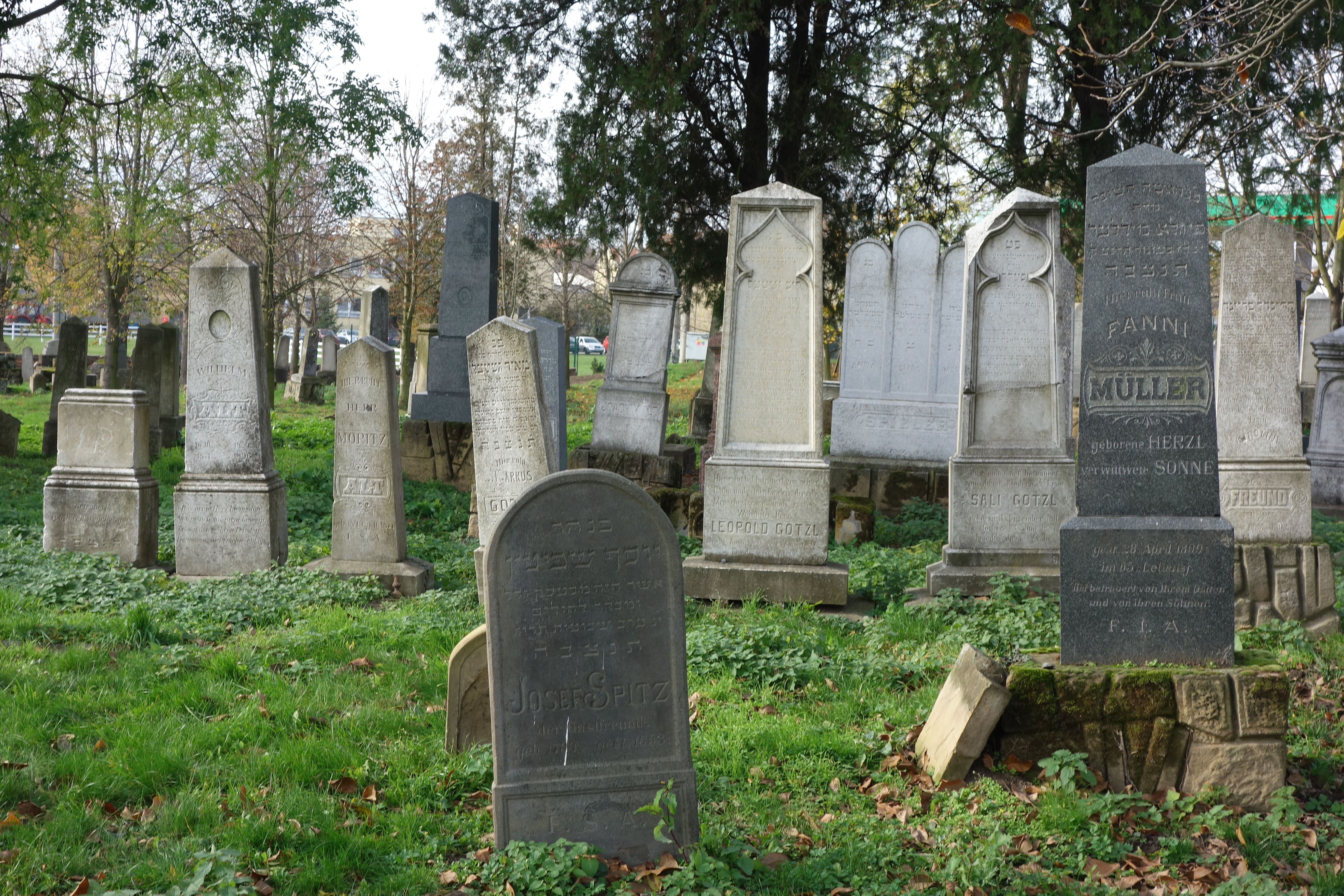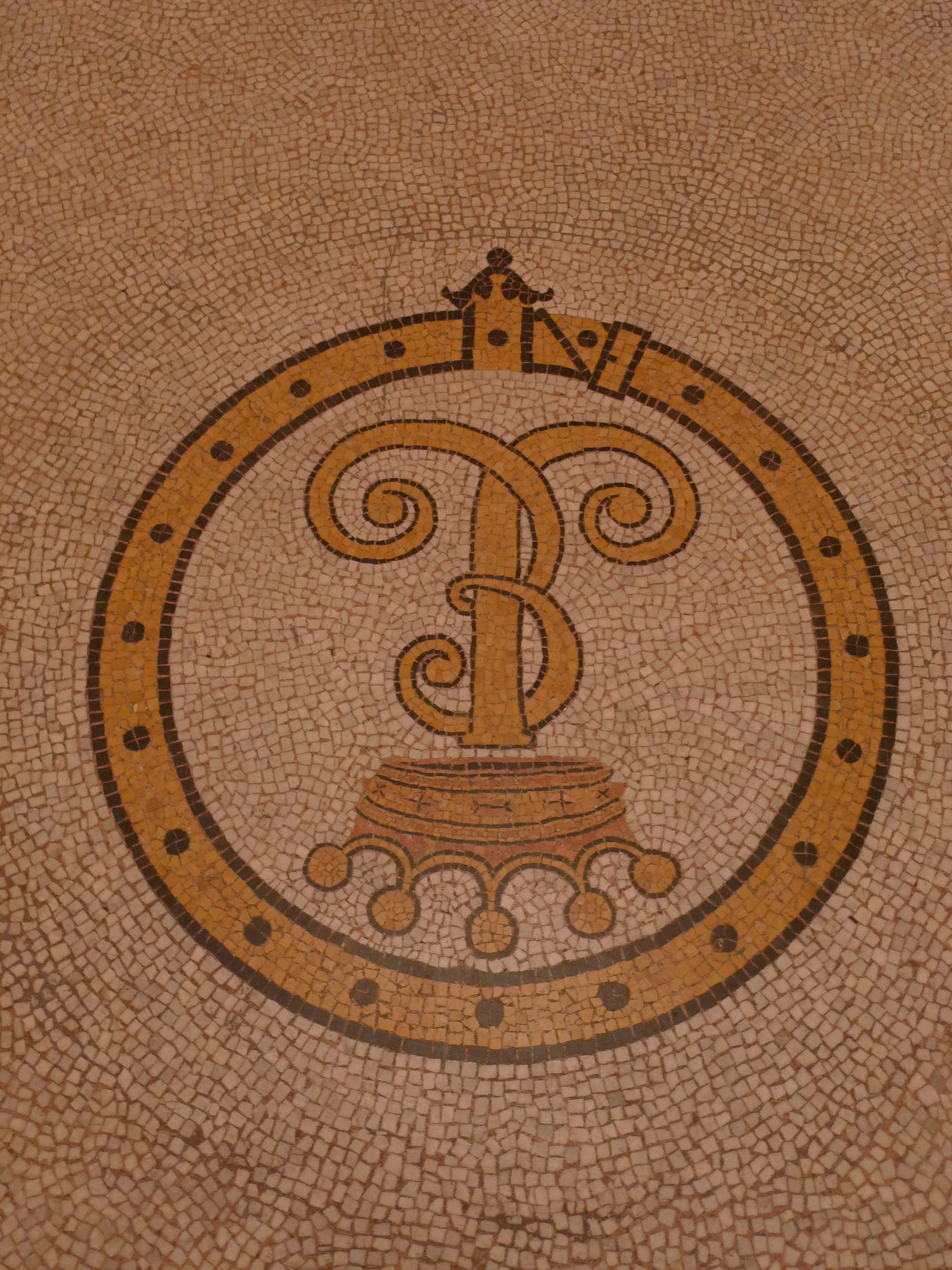WORKERS AT THE CONSTRUCTION OF THE ALPINE HYDROELECTIC POWER PLANT KAPRUN: FROM NAZI SLAVE LABOUR TO THE „HEROES“ OF POST-WAR AUSTRIA
Werner Tautz, my father, as a young worker at the construction site of the storage power plant Kaprun in 1952
Before the end of the Austro-Hungarian Empire single entrepreneurs built and ran power stations, most of which were fired with coal as this was a cheap resource in the empire. But after the end of World War I and the break-up of the Austro-Hungarian Empire in 1918 the Austrian First Republic suffered a serious economic set back and a shortage of energy. While the consumption of electricity was rising, coal had to be imported for running the coal-fired power stations. That’s why the construction of hydroelectric power plants was boosted in order to avoid the import of expensive coal from Silesia and Bohemia. Between 1924 and 1930 the newly founded federal state corporations realised the first water power projects despite the resistance of large Austrian banks which refused to finance these projects because they held shares in the huge Czech and Polish coal mines. At the same time the establishment of an interconnected distribution system of the independent federal states’ electric corporations was attempted. So in the 1920s and 1930s a shift from coal to water power was visible. Yet due to the separate interests of the nine different federal states a functioning Austria-wide interconnected electrical grid could not be established.
Even before the “Anschluss” in March 1938 (the incorporation of Austria into Hitler’s “Third Reich”) Germany was trying to get access to the largely unexploited water power resources in Austria. Hydroelectric power stations in the west of Austria already delivered electricity to Germany before 1938. In preparing for the next war Germany made the decision to expand water power production considerably and to centralise the whole electricity production. The “Energiewirtschaftsgesetz” (energy production law) of 1935 made all energy production subject to state planning. Due to the substantial increase in arms production the demand for energy dramatically rose in Germany. There most power stations were coal-fired. That’s why the economic arguments for integrating Austria into the German territory did not just include the extensive Austrian gold and currency reserves, metallurgical resources and production and the skilled human capital, but most of all the opportunities for the exploitation of hydroelectricity. In April 1938 Hermann Göring stressed that the development of the Austrian hydroelectric capacities was not in the interest of the Austrian population or economy, it served the purpose of the German preparation for war. Due to the decisive lack of energy in Germany, the National Socialist (NS) economic planning saw to it that immediately after the “Anschluss” all plans for hydroelectric power plants which had been designed before 1938 were put into practice. This constituted part of the NS “Four-Year Plan” in order to compensate the scarcity of energy in Bavaria and prepare for the establishment of a chemical and metallurgical industry there. Another project was the creation of an interconnected electricity grid which linked Austria to Germany, whereby the west of Austria was completely subjected to the needs of the German weapons production. That’s why 62 per cent of the newly established hydroelectric power plants were situated in Salzburg, the Tyrol and Vorarlberg. All energy production in Austria was centrally planned in Berlin and became part of the state-owned VIAG (“Vereinigte Industrieunternehmungen AG”). This organisation founded a subsidiary, the AEW (“Alpenelektrowerke AG”), which was responsible for the construction of hydroelectric power stations in the Alps and for building up an interconnected and coherent electricity grid. Local energy producers tried to resist, especially in the Tyrol, but to no avail. Yet all attempts at increasing production and capacity during the Second World War could not alleviate the energy shortage in Germany. Already before the war the industry was by far the largest consumer of energy and this trend was further intensified during the war. Until the beginning of 1942 the German energy production somehow managed to meet demand, but afterwards drastic restrictions were imposed on private energy consumption. Nevertheless, the German supply of electricity remained permanently insufficient and could no longer even meet the demands of the weapons production.
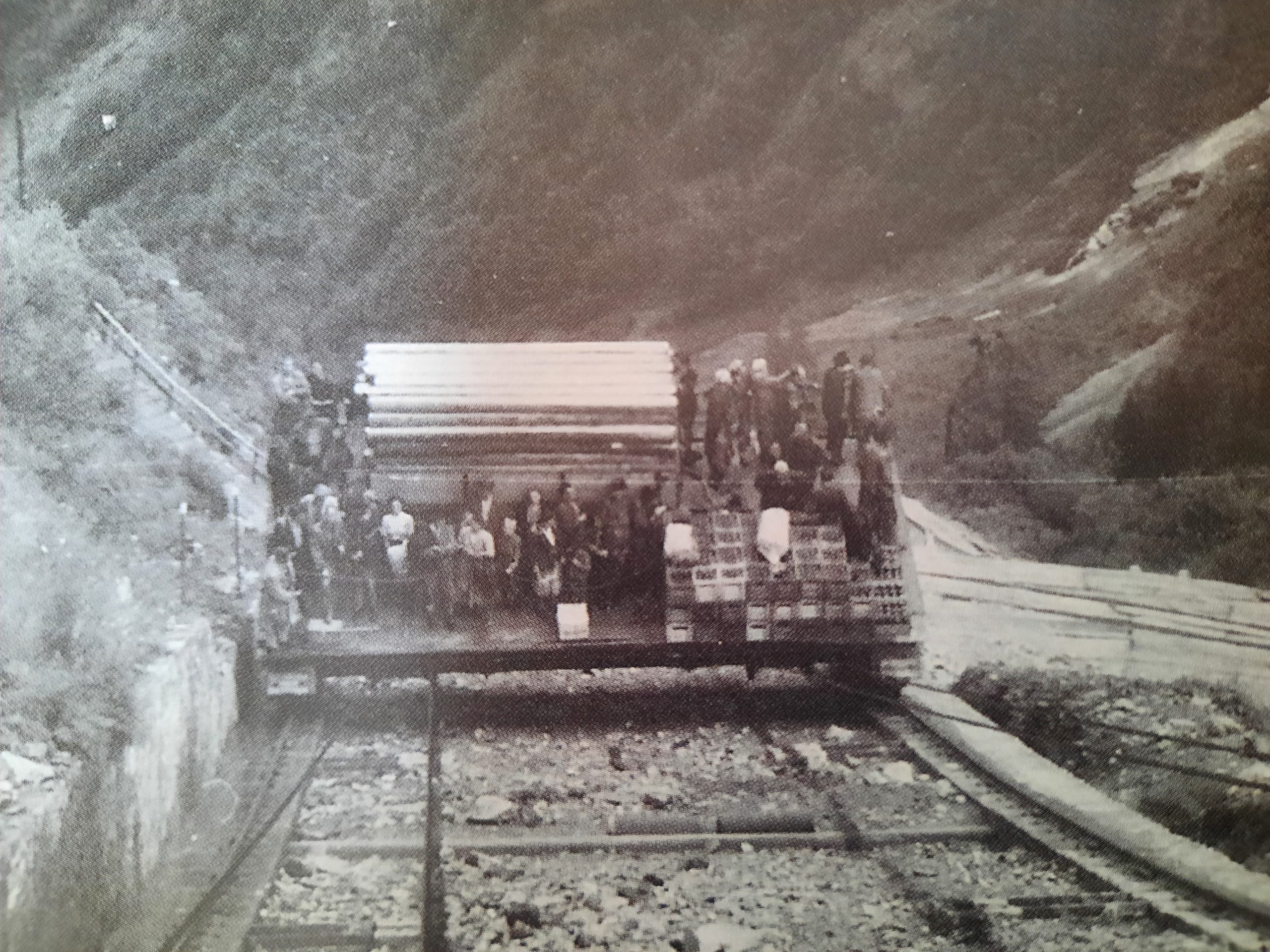
Kaprun construction site: one of the many photos Werner Tautz took when working there between 1949 and 1955
Another economic aspect of the “Anschluss” was the integration of half a million unemployed Austrian workers in German infrastructure projects and arms production, which had suffered under a lack of labour force since 1936. In the first period from the “Anschluss” in 1938 until the outbreak of the war in 1939 not only the unemployed were integrated in the German labour market, but slave labour was already introduced by applying the Nazi racist ideology and compelling the now marginalised population groups, most of all the Jews, Roma and Sinti to forced labour. During the second phase from 1939 until the military disaster of 1941/42 in the Soviet Union the employment of foreign forced labour started with foreign civilians who were forced to work in the German arms production and with prisoners-of-war. At the end of this period the German industry was so dependent on foreign forced labour that without it the war could not have been carried on. The third period from 1941/42 until 1945 was characterised by massive exploitation of Jewish and foreign slave labour. Slave labour in the Nazi period must not be confused with fatigue duty of citizens of the “Third Reich”, for instance of young women who had to work in agriculture for a year or for youngsters under the conscription age to construct motorways or defences (see article on “Nazi Children Evacuation Programme”). All forced labourers were racially or politically persecuted and subject to maltreatment after their home country had been conquered by the Nazis.
Memorial against war and Fascism by Alfred Hrdlicka in Vienna opposite the “Albertina”: on the left the “Gateway of Death” sculpted from “Mauthausen granite” as well as the “Stone of the Republic” with the words of the Austrian Declaration of Independence on the right. “Mauthausen granite” was mined by the KZ prisoners there.
The various groups of forced labourers were treated differently by the Nazis. In Austria around 20,000 Jews were constringed to do slave labour after they had been excluded from the normal job market and the “Ostmark” (Nazi name for Austria) acted without a legal basis and as model for the rest of Germany with respect to brutal exploitation and expropriation of the Jewish population before their extermination in concentration camps (“KZ”). My great-grandfather, Ignaz Sobotka, was forced to do slave labour at the road construction firm “Teerag” and my grandmother, Lola Kainz, worked in the war-related industry in Vienna (see article “Nazi Collection Camps in Vienna”). Roma and Sinti were taken from their work places and locked up in forced labour camps in Austria before being murdered in the KZ Kulmhof and Auschwitz. The GESTAPO further ordered “unruly” German nationals and foreigners to be interned in so-called “labour education camps” (“Arbeitserziehungslager”) for some weeks or months before they were allowed to return to their work places. Another group of slave labour were around 50,000 Hungarian Jews who were chased to Austria from Budapest on foot after an agreement between the SS and the Hungarian Fascist representative Rezsö Kasztner in June 1944. They were interned in camps and compelled to work as slave labourers. The conditions in these camps in Austria were so terrible that a majority of the prisoners died within a very short time. Just to give two examples: in the camp in Felixdorf of 2,087 prisoners 1,865 died within a few weeks; in Lichtenwörth 1,600 out of 2,500 and in Gmünd 486 out of 1,700. When the Soviet army was approaching, those who were still alive were chased in “death marches” towards the KZ Mauthausen and Gunskirchen in the west, whereby 15,000 to 18,000 died.
“Tauern mountain ranges” around Kaprun
Already at the end of 1939 the first prisoners-of-war arrived in Austria and they formed the second largest group of forced labour. According to military rank and nationality they were treated differently, whereby the Soviet prisoners-of-war were always treated worst; they were even systematically murdered. Most of the prisoners-of-war were used in agriculture, but also in factories and for the construction of dams and power plants. How many people died in POW camps and forced labour camps in Austria is unknown but the lowest estimate is 23,039; 96 per cent of which were Soviet prisoners-of-war. This number does not include those prisoners-of-war who died in the KZ network of Mauthausen, where more than 10,000 Soviet prisoners-of-war were murdered. Furthermore this number does not include the prisoners-of-war who died on death marches at the end of the war, when POW camps in the east of Austria, for example in Kaisersteinbruch, Gneixendorf and Edelbach, were evacuated and the prisoners chased west towards Braunau.
The KZ Mauthausen / Gusen near Linz was established in 1938 and starting as an extermination camp with a huge quarry developed in the course of its existence to a large network of concentration and extermination camps with an intricate system of division of labour, which ended fatally for tens of thousands of prisoners until the Allied liberation in 1945. Like many concentration camps the function of the KZ complex of Mauthausen / Gusen was extended from a death camp, whose only function was the killing of those interned there, to a forced labour camp in 1943 due to the drastic labour shortage in the German productive war industry. This meant that the number of KZ prisoners rose from 14,000 at the beginning of 1943 to around 73,000 in October 1944. The focus of employment of these KZ prisoners was the arms production in Linz, Steyr and Wels, for example the companies “Steyr-Daimler-Puch AG” and the “Reichswerke Hermann Göring” in Linz, and the industrial area around Vienna, for example “Henkel Schwechat”, “Flugmotorenwerke Ostmark” (aero engine maker) in Wiener Neudorf or “Rax-Werke” in Wiener Neustadt. The KZ complex Mauthausen /Gusen comprised more than 40 forced labour camps and the prisoners did not only work in the war-related industry, but also in the construction industry for the infrastructure development, such as tunnels and power stations, and finally since autumn 1943 in the construction of a huge network of tunnels to transfer the arms production underground. KZ prisoners had to dig tunnels for example near Melk for “Steyr-Daimler-Buch AG” and the “Flugmotorenwerke Ostmark”, in Ebensee for the development and production of rockets and in Gusen for “Messerschmitt” planes. At least 102,000 prisoners died in the KZ complex Mauthausen.
…
